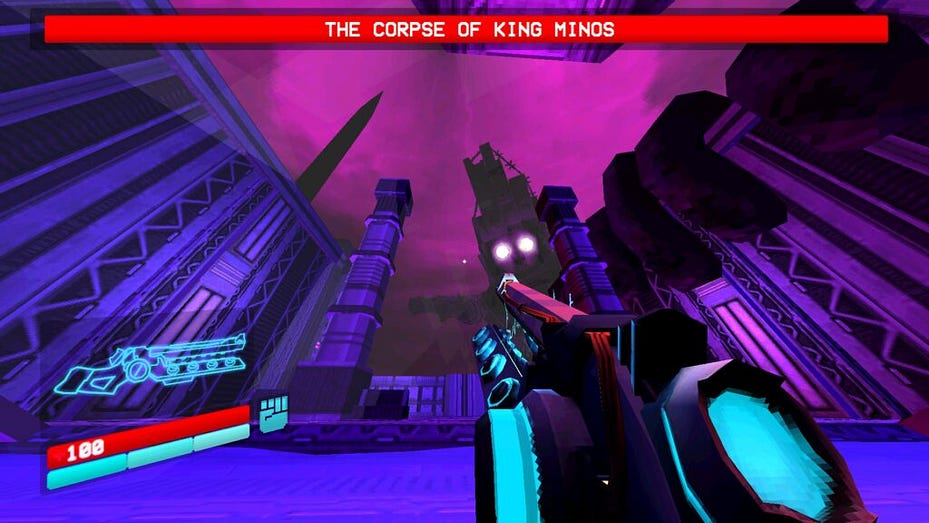Why Building Great Games is About More Than Numbers
You can’t put a number on 'game feel'

I was reading a piece recently on Game Developer that gave me pause about the meaning of game design at the AAA level: is it really about focusing on analytics and trying to “math” the perfect game? A monumental shift occurred in the 2010s with the rise of the indie development scene. But one important conversation that is often missed in the context of that shift is the assumptions about AAA development and which of these can/should be put to rest. Today I want to discuss the reasons why you can't rely solely on quantitative metrics to create a great and memorable game, and how some of the very best games have a little "grit" to them.
Objectively average
The core principles of game design are not necessarily best represented by objective criteria. Video games are, by definition, a complex combination of art and science. Sure, you can define standards for coding or you can objectively describe different styles of art. But how do you explain the differences in first-person emotions and sensations you experience playing Super Mario and Crash Bandicoot? Or how Doom 2016 and Doom Eternal feel like quite different experiences despite the enormous amount of design DNA they share?
The x-factor that can elevate a game from being merely good to award-winning-great is often found in these qualitative spaces where terms like "game feel" become relevant, despite their evasion of highly precise description. These are the spaces where distinctions between games make the difference between a game that players will remember fondly for years to come versus games that players easily forget within a couple of weeks after launch.
It is, of course, true that if you don't understand game design and mechanics, you'll likely end up with a game nobody wants to play. However, if you look at a game only through a quantitative lens (without factoring in the many important qualitative aspects), you run the risk of the worst of all worlds (which, in my view, is the creation of a remarkably average game). Nobody will remember playing it and you will not develop a loyal fanbase who are prepared to come along for the ride (either they won't show interest in your roadmap for the game you just shipped, or they'll be uninterested in any new projects you announce).
Source: Game-Wisdom via YouTube.
Part of sustainable game development is creating games that keep players excited about what's coming next from your studio. In other words, you're really building a relationship with your players that goes beyond one individual game experience. Ideally, you want players to be interested in your games sight unseen; the mere fact you are working on something new gets them excited. Studios like Strange Scaffold and New Blood Interactive are examples of developers who achieved this level of trust and loyalty with their fans.
It is obviously the case that understanding game design - and looking for cool ideas - involves, at least in part, playing games and exploring a wide range of different games. It can be tempting to focus your attention entirely on the big hits that perform well commercially, but I'd suggest looking beyond these experiences, especially if you want to give yourself the best chance of developing unique new ideas that help your game stand out in the crowd.
Finding the rough edges
A key aspect of good game design - and good game criticism - is the ability to look beyond the popular games that everyone is currently playing. You can't study game design solely by playing only the "best" games released each year. Doing so means playing a heavily curated and refined experience with all of its edges sanded down. You're not necessarily going to see the pitfalls and pain points of a genre (nor even know what they are in the first place). Sometimes, a slightly off-kilter "6 out of 10" game might contain something completely original and amazing that is worth your attention.
One of my favorite games in recent memory is Astlibra: Revision. This game is a hodgepodge of stock assets and free music that is miles away from a polished, AAA experience. And yet, despite this, it comes together in a compelling way that feels cohesive. A game like this could never have been conceived by a major studio or someone who only experiences AAA games. The same could easily be said of hits like Balatro, Vampire Survivors, Lethal Company, and many more. These games are not the best looking - they won't stress a modern graphics card - and they didn't require millions of dollars to create.
So, what qualities to these games share? They each explore a very unique and specific aspect of game design. Despite not being highly polished, these games all have something special that resonates with players, in a similar way that games like Stardew Valley and Factorio scratched very specific itches.

Game designers - and publishers - continue to chase game success stories thinking there is some kind of mythical blueprint that, if they follow it to the letter, will guarantee their game will be the next million-copy-selling-GOTY-winning success.
What really happens more often than not is that these games try to copy another specific game but end up delivering far less than the design they are mimicking. Players don't want carbon copies of games they've already played; they want something new and exciting. Bullet Hell/Heaven games are such a clear example of this approach in action; so many of them are either "Vampire Survivors but worse" or "exactly the same as Vampire Survivors but with a different theme". My favorite examples of game design in recent years have all gone in truly unique directions. I'm referring to games like Brotato, Picayune Dreams, and Death Must Die.
Feeling it out
As I explained earlier, understanding the difference between good, bad, and great games - in terms of "feel" - is very difficult to articulate in a concrete sense. You can explain to another person how to code jumping physics in a game, but you can't necessarily spell out the precise numbers needed to make jumping feel good. I've seen numerous examples of designers trying to create games directly inspired by classics like Super Mario or Doom, but they often do so in the most cookie-cutter way possible. There is generally a large difference between the feeling of playing Super Mario or Doom and the games that are inspired by them. Let me hammer home a key point here:
Emulating classic games should not be the goal of your game's design: those games are the benchmarks you need to clear if you expect players to even think about playing your new game.
If anyone tells you there is a perfect way to build a platformer, strategy, FPS, or any other genre of game: they're lying or they simply don't know what they're talking about. There are always some foundational aspects of game mechanics in each genre that need to be understood; these are the basic "rules" that have to be grasped before they can be broken. However, as important as these foundational elements are, they aren't enough on their own. If your game is a carbon copy of a game released in 1989 - even if it was the best example of design from that year - you shouldn't expect modern players to automatically flock to it.

When a game does something that goes above and beyond its core/foundational mechanics, I want to tell everyone about it so that they can be inspired to go and make something different too.
Anyone who understands coding and basic design principles can make a game in any genre they set their minds to, but crafting an experience that will truly excite players is another matter entirely. You never know what will resonate with players in advance. Making a perfectly optimized cookie-cutter platformer is one thing, but what about a game requiring players to climb a mountain using a hammer?
Ultimately, there's no hidden secret or mathematical formula known only to large developers and publishers. The ability to create something truly special is open to anyone regardless of the size of your budget. The many outstanding games that have come to us through the indie development revolution are proof of that reality.
